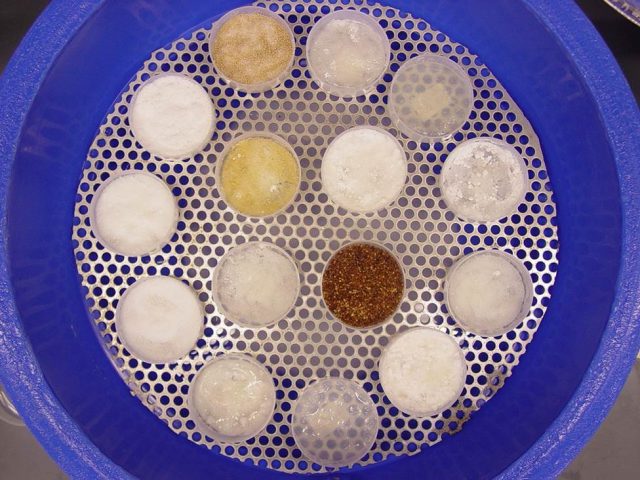A recent Purdue study featured in the Journal of Food Science, deciphers why food ingredient blends are more sensitive to changes in climate than single ingredients.
Understanding how food ingredients interact differently when blended can help those in the industry consider best practices to handle or package their product for a longer shelf life.
“Blending crystalline ingredients such as salt and sugar with amorphous solids (without uniform shape) such as proteins, starch-based ingredients, and gums destabilizes the ingredients when heated or exposed to increasing humidity,” said Lisa Mauer, professor of Food Science who led the research at Purdue University.
“This can be frustrating to food formulators and consumers alike.”
Humidity factor
The study builds on Mauer’s previous research on the deliquescence behavior of crystalline ingredients which identified the humidity at which crystalline ingredients begin to dissolve (the underlying reason behind salt, sugar, and lemonade mixes clumping).
To prevent deliquescence, the humidity must be kept lower than the deliquescence thresholds.
But this becomes more difficult when amorphous ingredients are added. “Picture amorphous ingredients as little sponges,” Mauer said.
“These sponges absorb water from the environment and their texture changes.”
Consumers find examples of this when a bag of chips is left open.
As the chips absorb humidity, their texture becomes rubbery and stale. Similarly, cotton candy quickly becomes sticky on a warm summer day.
The food industry uses the term water activity to describe the mobility of water in these foods, which gets higher as more water is absorbed or as the temperature increases.
The study is the first to identify the crossover point between the crystalline ingredient deliquescence point and the amorphous ingredient water activity.
Above the crossover point, crystalline ingredients dissolved in a closed system.
The study focused on blends of particulates that can be found in instant beverage mixes, seasoning blends, cake mixes, vitamin preblend mixes and powders used to flavor snack foods.
When food products move through distribution or home from grocery stores in the consumer’s trunk on a hot day, variant climates can affect the food before it ever gets to the pantry.
“While the moisture sorption-related problems can be solved by packaging ingredient blends in individual serving sizes, this approach increases costs and the environmental burden associated with packaging does not solve the enhanced temperature sensitivity of the ingredient blends,” Mauer said.
The research identified:
– the moisture sorption properties of the ingredients,
– how the deliquescence points of the crystalline ingredients and the water activities of the amorphous ingredients are affected by temperature,
– how the ingredient blends respond to environments over time, and
– documented the physical state and thermal properties of ingredients and blends using advanced analytical techniques such as powder x-ray diffraction and differential scanning calorimetry for food formulators and industries.
Story by Cheri Frederick of Purdue University










